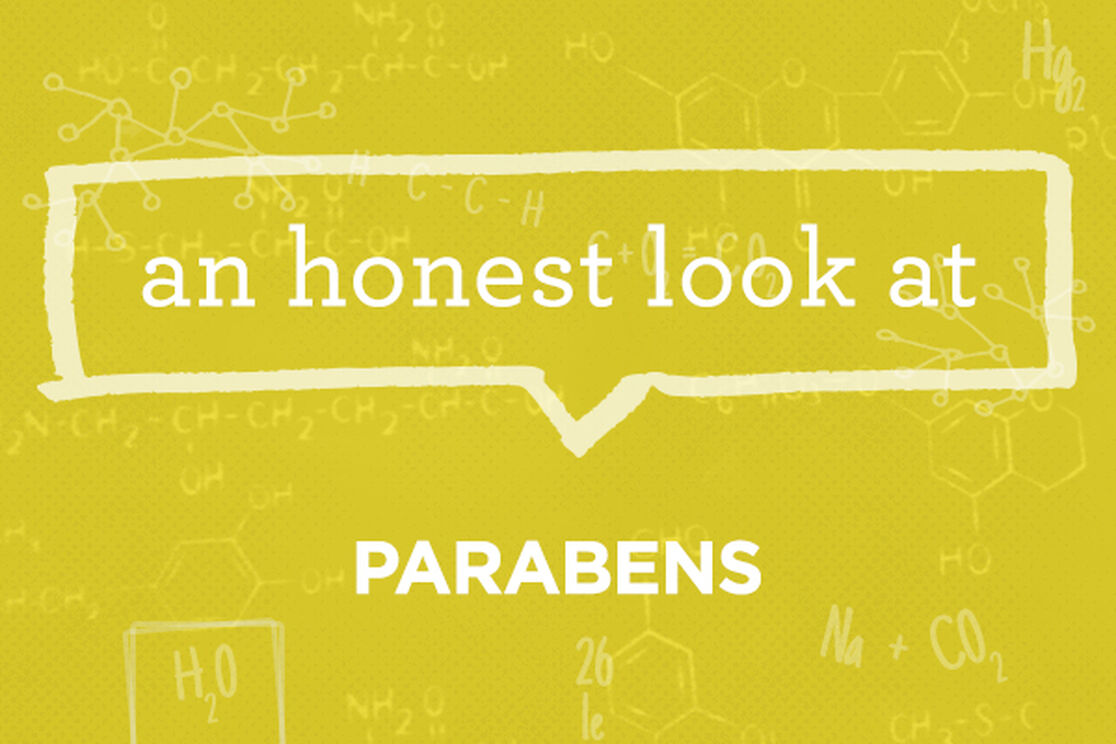This is part of our ongoing series helping consumers better understand chemicals, chemistry, and skincare product formulations. We translate the science, bust the myths, and give you an honest assessment, so you can make informed choices for your family!
Ingredient:
Parabens (Includes methylparaben, ethylparaben, propylparaben, butylparaben, heptylparaben, isobutylparaben, isopropylparaben, and benzylparaben.)
What they are:
Though a common chemical preservative found in personal care products, many consumers do not know the answer to one valuable question: what are parabens? Parabens found in cosmetic products, skincare products, hair products, and even food products are made synthetically by reacting an alcohol with an acid. While the form of alcohol varies depending on the specific paraben concentration, the acid is always p-hydroxybenzoic acid – a synthetic reproduction of a natural compound found in some mushrooms, coconuts, Acai oil, and more.
What they do:
Since the 1950s, parabens have been used in a vast array of products to prevent bacteria growth and these potentially harmful chemicals are currently the most widely used cosmetic preservative on the market. They are also sometimes used as a preservative in pharmaceuticals and food products.
Why we’re featuring them today:
Parabens are included in our Honestly Free Guarantee because paraben exposure can potentially affect natural hormone production or other aspects of the hormone system, leading to endocrine disruption. Their health risks are hotly debated, so here’s a snapshot of the research and controversy over this specific chemical.
In 2004, a small study led by Dr. Philippa Darbre in the UK found parabens in samples of breast tumors leading to widespread concerns over parabens’ potential role in breast cancer. Critics pointed out that noncancerous breast tissue wasn’t tested for paraben levels and that the presence of parabens in tumors doesn’t prove that they caused the cancer. Both are legitimate points, but follow-up studies have continued to identify reasons for concern pertaining to paraben use.
- In 2008, Darbre and her associates reviewed all of the research that had been conducted in the 4 years since their original findings and the body of evidence showed the following:
- Intact parabens were present in human urine (meaning the human body was not fully capable of metabolizing – or breaking down – the chemical preservative)
- Parabens penetrate human skin intact without breakdown and are absorbed systemically
- Parabens were repeatedly shown to contribute to estrogen disruption
- Parabens were also found to possess androgen disruption activity
- Parabens were genotoxic (which means they can damage the genetic information in cells causing mutations and potentially leading to cancer)
On top of that, a study published in the European Journal of Cancer Prevention found that an earlier age of breast cancer diagnosis correlated to the more frequent use of underarm products (deodorant) and underarm shaving. Two other studies found that when methylparaben was exposed to UV light on the skin, it could cause DNA damage and skin aging. Another study (animal), found that exposure to polyparabens at currently acceptable levels resulted in reduced sperm production.
Need we go on?
While it’s been pointed out that parabens may have far lower estrogenic activity than some natural estrogens we’re exposed to on a regular basis, the concern we have is regarding cumulative paraben exposure (i.e. how many times a person is exposed to these hormones each day) and uniquely vulnerable populations like pregnant women and children. During critical windows of development, an extra “dose” of hormones can lead to irreversible impacts. With all this in mind, synthetic preservatives are definitely something worth avoiding during pregnancy and childhood – especially since safer skincare product alternatives exist.
Want your home to be Honestly Free of parabens?
Just remember these two words: read labels. Look for anything that ends in “paraben” and, if you see it, put the product down and look for another option. As mentioned, parabens are widely used in cosmetics and personal care products. They can also be found in some pharmaceuticals and food products like baked goods, soft drinks, jams & jellies, dressings, and more.
We aim to provide you with the most honest and credible information possible. This article was reviewed for accuracy by The Honest Team and was written based on sources that are linked at the bottom of the article.
blog_review_statement



